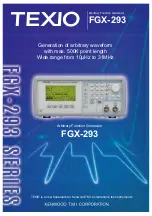
100423 - WIRELESS REMOTE START GENERATOR
OPERATION
16
"
NOTICE
Keep choke lever in “CHOKE” position for only 1 pull of the
recoil starter. After first pull, move choke lever to the “RUN”
position for up to the next 3 pulls of the recoil starter. Too
much choke leads to spark plug fouling/engine flooding due
to the lack of incoming air. This will cause the engine not to
start.
"
NOTICE
For gasoline restarts with hot engine in hot ambient > 30°C
(86°F) Keep choke lever in “75% CHOKE” detent position for
only 1 pull of the recoil starter. After first pull, move choke
lever to the “RUN” position for up to the next 3 pulls of the
recoil starter. Too much choke leads to spark plug fouling/
engine flooding due to the lack of incoming air. This will
cause the engine not to start.
"
NOTICE
For gas starting in in cold ambient < 15°C (59°F) the choke
must be in the “100% CHOKE” detent position for recoil
start procedures. Do not over-choke. As soon as engine
starts, gradually move the choke lever to the “RUN” position
over a 2-5 second duration.
"
NOTICE
If the engine starts but does not run make certain that the
generator is on a flat, level surface. The engine is equipped
with a low oil sensor that will prevent the engine from
running when the oil level falls below a critical threshold.
!
CAUTION
If the ignition switch is held down in the “Start” position
longer than 5 seconds it could damage the starter.
Battery
"
NOTICE
When the battery switch is in the “ON” position, the switch
will light up if the battery is sending out a charge. If the
switch does not light up while in the “ON” position, check
that the battery connection is still good.
"
NOTICE
The supplied 12V 9AH battery does re-charge while the
engine is running, but it is also recommended that the
battery be fully charged at least once per month.
Connecting Electrical Loads
Let the engine stabilize and warm up for a few minutes after
starting.
Plug in and turn on the desired 120 Volt AC single phase, 60 Hz
electrical loads.
–
DO NOT connect 3-phase loads to the generator.
–
DO NOT connect 50 Hz loads to the generator.
–
DO NOT overload the generator.
!
WARNING
Connecting a generator to your electric utility company’s
power lines or to another power source may be against
the law. In addition this action, if done incorrectly, could
damage your generator and appliances and could cause
serious injury or even death to you or a utility worker who
may be working on nearby power lines. If you plan to run a
portable electric generator during an outage, please notify
your electric utility company immediately and remember to
plug your appliances directly into the generator. Do not plug
the generator into any electric outlet in your home. Doing
so could create a connection to the utility company power
lines. You are responsible for ensuring that your generator’s
electricity does not feed back into the electric utility power
lines.
If the generator will be connected to a building electrical
system, consult your local utility company or a qualified
electrician. Connections must isolate generator power from
utility power and must comply with all applicable laws and
codes.
Do Not Overload Generator
Capacity
Follow these simple steps to calculate the running and starting
watts necessary for your purposes:
1. Select the electrical devices you plan on running at the
same time.
2. Total the running watts of these items. This is the amount
of power you need to keep your items running.
3. Identify the highest starting wattage of all devices
identified in step 1. Add this number to the number
calculated in step 2. Surge wattage is the extra burst of
















































